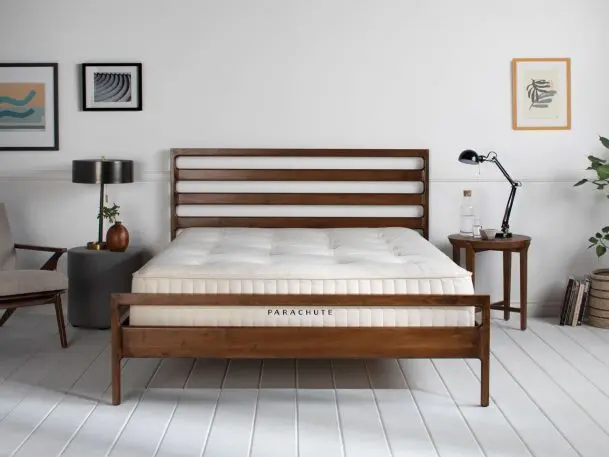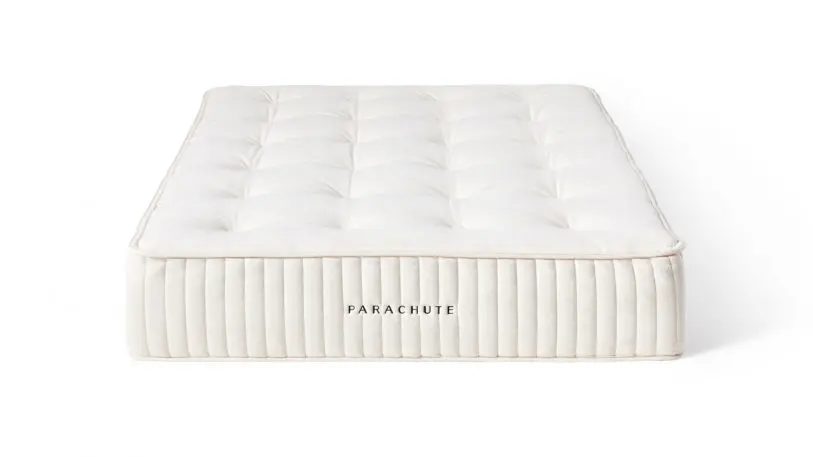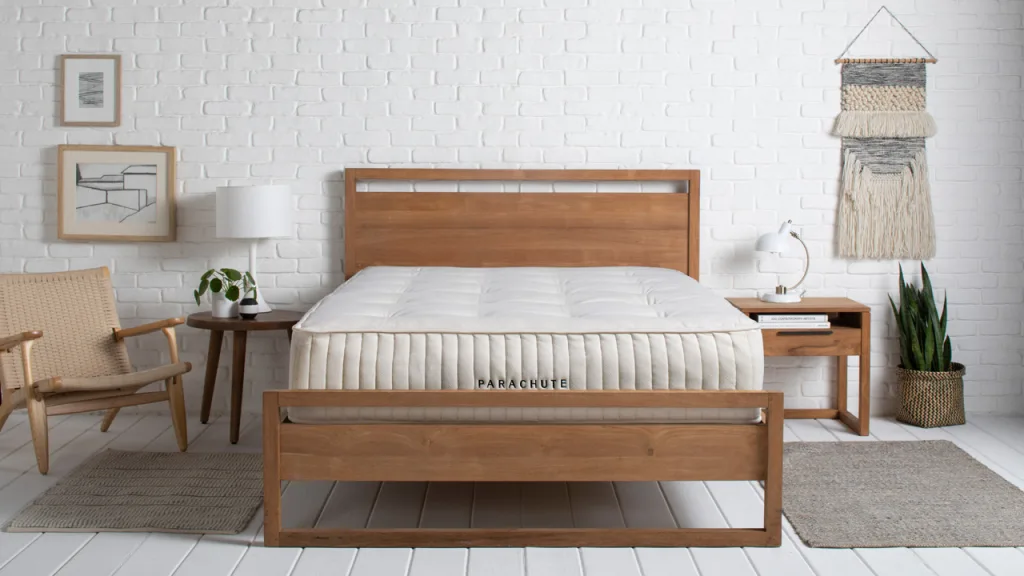If you’re in your thirties and have recently graduated from buying your home goods from IKEA and Target, you have probably heard of Parachute. It’s a five-year-old fast-growing luxury bedding brand, which exists alongside companies like Brooklinen, Boll & Branch, and Crane & Canopy. Soon after it launched, Parachute moved beyond sheets, adding more and more products to its store. These days, you can pick up comfy blankets, alpaca throws, down pillows, all in the brand’s earthy, relaxed, California aesthetic. And starting today, you can even buy an eco-friendly, American-made Parachute mattress.
Last year, I reported on the $29 billion mattress wars. At the time, there were 178 different online mattress brands all competing to become America’s mattress of choice. Parachute is choosing to enter a market that is already crowded–a decision that reflects the evolution of a fast-moving industry.

But this additional level of convenience–coupled with the brand’s use of expensive organic cotton and wool certified by the Global Organic Textile Standard–comes at a cost. At $1,899 for a queen size mattress, Parachute’s new product is priced to compete with the higher end of the market. For comparison, it’s about double the price of Casper’s original mattress ($995), but cheaper than Casper’s premium mattress ($2,250).
Parachute was among the earliest players in the direct-to-consumer luxury bedding space, which has been bubbling over the last few years. However, the bed linen market is still nowhere near as crowded as the noisy online mattress industry.
“It’s relatively easy to manufacture a mattress,” says Seth Basham, a mattress industry analyst with Wedbush Securities. “We’re seeing lots of companies rushing into the market with their own mattresses including Amazon, which sells a Basics mattress. This has also meant that prices of mattresses keep going down.”
Given how flooded the market has become, it is now more expensive than ever to capture a customer’s attention online through Facebook and Instagram ads, or through mattress blogs. But this is exactly why it makes perfect sense for an existing brand like Parachute to enter the market.
“It’s become extremely expensive–perhaps no longer even profitable–to sell these high-ticket one-time purchases like mattresses,” Kaye says. “But we have spent five years building brand loyalty with our existing customers, through their purchases of towels and sheeting. Hopefully all of this work will pay off now.”

Basham says we’re going to see more brands like Parachute enter the mattress market, since they have an advantage over the new flock of startups that exclusively sell mattresses. “These brands don’t have to acquire new customers,” he says. “If you’ve already got a customer base, it makes sense to become a lifestyle brand and sell a wide range of products.”
Kaye started Parachute in 2014 to cater to a very specific demographic of digitally native consumers who were just entering the nesting phase of their lives and ready to invest in more expensive home goods. The brand launched online, but now has a network of five brick-and-mortar locations in cities where the brand is particularly popular, including Los Angeles, San Francisco, and Portland. Last summer, Parachute raised $30 million in Series C funding, bringing its total funding to $44 million, and will use this investment to open up 15 more stores by 2020.
The brand has a thriving Instagram account that reflects a very particular home aesthetic, one that is gender-neutral, peaceful, and full of a clean color palette of creams, whites, and grays. In photoshoots, beds are often not perfectly made but full of crumpled sheets, and rooms are full of natural elements, like wood, sheepskin rugs, and plants. Over time, Parachute has tried to grow with its customers, who began getting married and having babies–it now sells crib sheets, baby blankets, and baby towels. This strategy means that a third of Parachute’s revenue now comes from repeat customers, according to Kaye.

The mattress is a natural next step in this process. “We’re not going after a different customer,” says Kaye. “We know our core customer pretty well. It’s people who are between 30 and 45, who are beginning to prioritize things like self-care and sleep.”
Over the course of interacting with her customers over the last five years, Kaye has identified that educated millennials are particularly concerned about sustainability and organic materials. Parachute stands out from many online mattresses because it isn’t made of foam or latex, but rather, from organic cotton, pure wool from New Zealand, and steel spring coils. One benefit of these materials is that they are naturally flame retardant, so there was no need to introduce flame retardant chemicals. And besides being good for the consumer, they’re biodegradable. Kaye also points out that the mattresses are made in a family-owned factory that has been making them for five generations.
Parachute’s entrance into this already-crowded market reflects growing consolidation in the mattress and bedding markets. Last year, Boll & Branch launched a $2,500 mattress, targeting its own customers who tend to be slightly older than the average Parachute customer and inclined towards a more traditional aesthetic. And meanwhile, mattress brands have been entering the bedding market. Last year, Casper and Saatva also launched sheets.
In other words, more established brands that already have a sizable customer base are now trying to sell them more and more sleep products–until they have effectively monopolized their bedrooms. “This is sort of the final piece of the puzzle to create a true, all-encompassing Parachute sleep environment,” says Kaye.
On the other hand, Basham says that it is going to be harder for smaller startups to enter the mattress space, because it will be hard to compete with the larger, established lifestyle brands.
Not so long ago, the mattress industry was the Wild West, but these days, it is organizing itself into big dominant players, and smaller brands that stand to fall between the cracks. “The smaller brands are less likely to survive, and if they do, they’ll be marginal players,” he says.
Recognize your brand’s excellence by applying to this year’s Brands That Matter Awards before the early-rate deadline, May 3.




